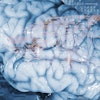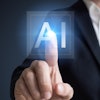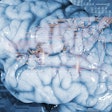Dear Artificial Intelligence Insider,
Radiologists will undoubtedly face change in their professional lives with the advent of artificial intelligence (AI). To ensure their future value in healthcare, it would behoove them to embrace the change and become early adopters of AI technology, according to Dr. James Min of Weill Cornell Medical College.
Dr. Min shared his thoughts on how AI can make healthcare better in a talk at last week's Canadian Association of Radiologists (CAR) annual meeting, and you can read all about it in this issue's Insider Exclusive.
In another presentation at the CAR annual meeting, Dr. Ronald Summers, PhD, of the U.S. National Institutes of Health made a similar case for an active role for radiologists in AI. He encouraged radiologists not to be intimidated by AI. Instead, they should think of the technology as a rebranding of computer-aided detection software, with deep learning complementing the work of radiologists now and in the future. Click here for our coverage of his talk.
The development of AI in radiology has been slowed by the need to test algorithms on large numbers of real-world imaging studies. Kyle Henson, a director of enterprise imaging for a large healthcare system, has an idea for how to make that crucial data more accessible to developers. Click here to find out why he thinks this approach could enable more widespread use of AI.
Will ultrasound and AI one day fulfill the promise of the legendary tricorder from "Star Trek"? Perhaps, but for now, AI is poised to deliver many benefits to point-of-care ultrasound -- as well as the potential for jarring changes to the role of physicians in these studies. Click here to learn more.
Researchers from Stanford University recently concluded that their deep-learning algorithm could potentially yield faster image acquisition, lower costs, and fewer motion artifacts in musculoskeletal MRI. How could they achieve those goals? Click here for the details.
AI can enhance the business and operational side of radiology, but radiologists and practice managers need to understand the benefits and limitations of the technology before adopting it, according to a recent presentation at the Radiology Business Management Association's Paradigm annual conference. You can access our report by clicking here.
As radical as it might seem, some industry observers believe that a potential shortage of radiologists is looming on the horizon in the U.S. Can AI help fill the gap? Yes, it can, according to Laurie Lafleur from Paragon Consulting Partners. Learn how in her new column.
How many annotated images are needed to train a deep-learning algorithm for radiology applications? Perhaps not as many as you might think. Researchers from Google recently reported promising results from using both annotated and unannotated images to develop an AI algorithm that can simultaneously identify and localize disease on chest x-rays.
While research and commercial activity are surging for AI in radiology applications, the fear, uncertainty, and doubt (FUD) factor still remains a big hurdle to clear, according to consultant Michael J. Cannavo, also known as the PACSman. Delve deeper into the current AI market dynamics by reading his latest Straight Talk From the PACSman column.
Is there a story you'd like to see covered in the Artificial Intelligence Community? Please feel free to drop me a line.




















